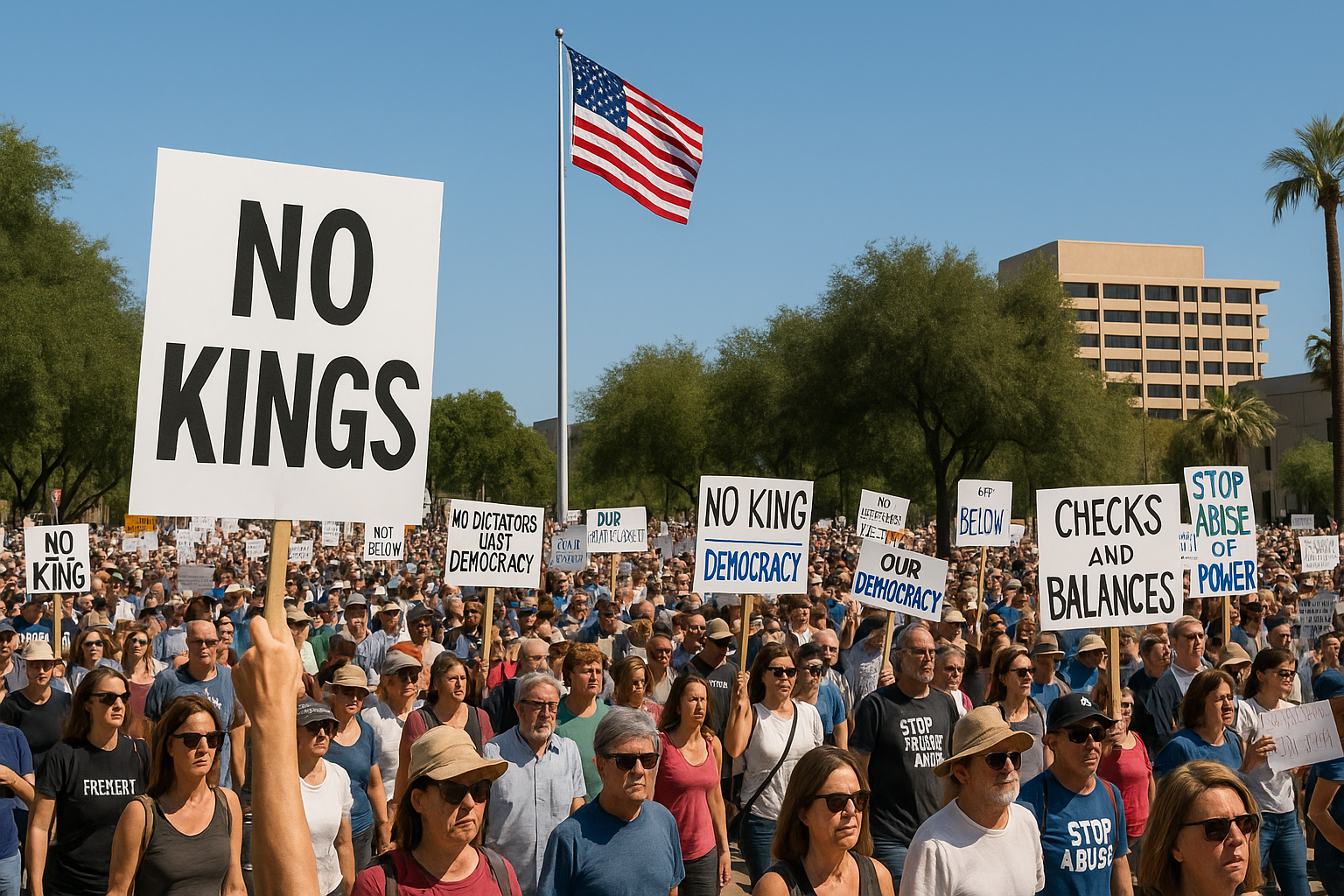Thousands Rally Across Arizona in Nationwide “No Kings” Protests
On June 14, over 20,000 Arizonans joined the national “No Kings” protests in Phoenix, Tucson, and Flagstaff, calling for democratic accountability amid rising concerns about federal authority and civil liberties.
Phoenix Hosts Largest Rally at State Capitol
The most substantial demonstration took place at Wesley Bolin Memorial Plaza in Phoenix, where police estimated roughly 20,000 participants gathered outside the Arizona State Capitol—a principal event in a broader nationwide movement held in over 2,000 cities en.wikipedia.org+1fox10phoenix.com+1. Protesters carried signs demanding limits on executive power and voiced opposition to what they described as threats to democratic norms.
Tucson and Flagstaff Join Mobilization
Similar rallies took place in Tucson, with thousands marching downtown, and in Flagstaff, where around 3,000 people gathered at heritage venues near Northern Arizona University . Protest organizers emphasized that the movement in Arizona reflects both local and national concerns about authoritarianism.
Community and Law Enforcement Response
City officials reported most protests remained peaceful, though Phoenix authorities implemented additional security measures around the Capitol and downed streets to manage crowds. No major incidents were reported, and traffic lanes reopened shortly after the largest demonstration concluded.
Phoenix Mayor Kate Gallego’s office issued a reminder respecting free speech rights, stating that the city supports peaceful, lawful assembly and will ensure public safety during future events.
National Context Shapes Local Protests
The Arizona demonstrations were part of the broader “No Kings” wave on June 13–14, drawing hundreds of thousands across the U.S. The movement—sparked by concerns about recent federal actions—sought to assert limits on executive power, protect democratic institutions, and push for stronger oversight.
What Comes Next in Arizona
Organizers in Phoenix and Tucson are planning town halls and community forums to convert protest energy into civic action. They aim to engage local legislators on issues like executive oversight and policy transparency. Meanwhile, Phoenix organizers are exploring future events that link voter registration campaigns and civic education into their efforts.
Implications for State Politics
The large turnout in Arizona highlights the state’s engaged electorate approaching a pivotal 2026 election cycle. Lawmakers from both parties monitor the vocal activism from concentrated areas like Phoenix, Tucson, and Flagstaff. Analysts note that continued civic protests may influence upcoming legislation on democracy, voting, and gubernatorial powers.
Arizona Protest Snapshot
| Location | Approximate Attendance | Key Message |
| Phoenix | 20,000 | “No Kings” — limit executive power |
| Tucson | Several thousand | Civic rights and democratic checks |
| Flagstaff | 3,000 | Student-led democracy rally |
Broader Significance for Arizona’s Civic Life
Beyond focusing on national issues, Arizona’s “No Kings” protests showcase the state’s growing civic energy. With legacies of contentious debates—ranging from election laws to pandemic mandates and Indigenous rights—Arizona continues emerging as a nationwide center for engaged grassroots activism.
Observers note that successful shifts from protest to policy will depend on sustained engagement—such as voting drives, public forums, and collaboration with elected officials.
Final Takeaway
Rallying over 20,000 in Phoenix and gathering thousands more statewide, Arizona’s participation in the “No Kings” protests reflects a broader movement for democratic accountability. With further community events and political dialogue in the pipeline, these protests may mark the beginning of a new era of activism influencing state and national policy.
